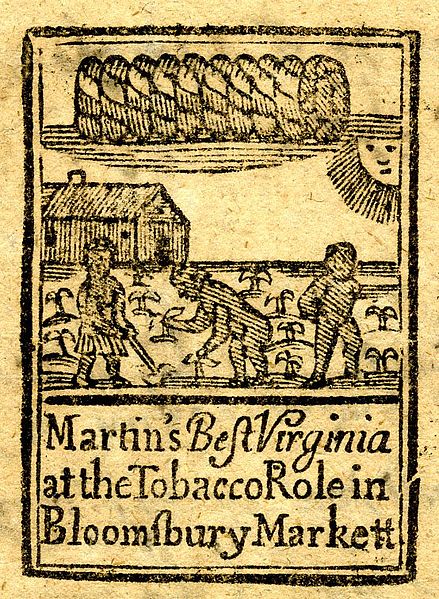The Tobacco Lords were a group of Scottish merchants active during the Georgian era who made substantial sums of money via their participation in the triangular trade, primarily through dealing in slave-produced tobacco that was grown in the Thirteen Colonies. Concentrated in the port city of Glasgow, these merchants utilised their fortunes, which were also partly made via the direct ownership of slaves, to construct numerous townhouses, churches and other buildings in Scotland.
A portrait of Tobacco Lord John Glassford, his family and an enslaved Black servant c. 1767
William Cunninghame's neo-classical mansion on Queen St, Glasgow, built in 1780 at a cost of £10,000
St Andrew's in the Square
Tobacco in the American colonies
Tobacco cultivation and exports formed an essential component of the American colonial economy. It was distinct from rice, wheat, cotton and other cash crops in terms of agricultural demands, trade, slave labor, and plantation culture. Many influential American revolutionaries, including Thomas Jefferson and George Washington, owned tobacco plantations, and were hurt by debt to British tobacco merchants shortly before the American Revolution. For the later period see History of commercial tobacco in the United States.
Tobacco advertisement from 18th century London
Nicotiana tabacum
Cultivation of tobacco at Jamestown 1615
Slaves processing tobacco in Virginia in 1670







